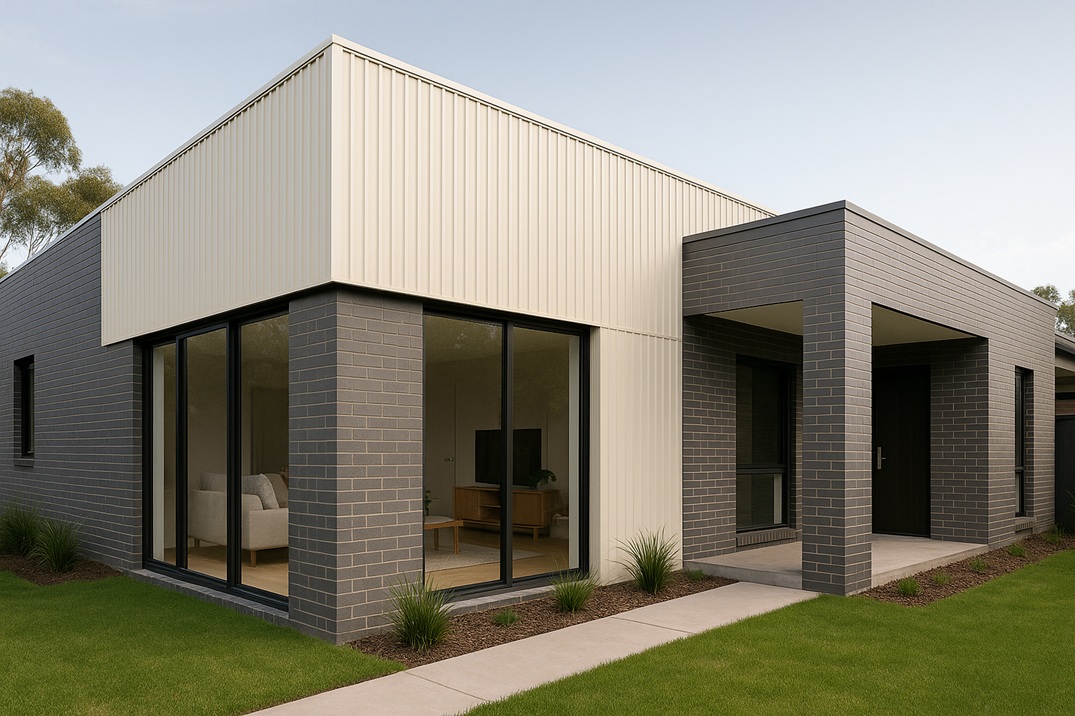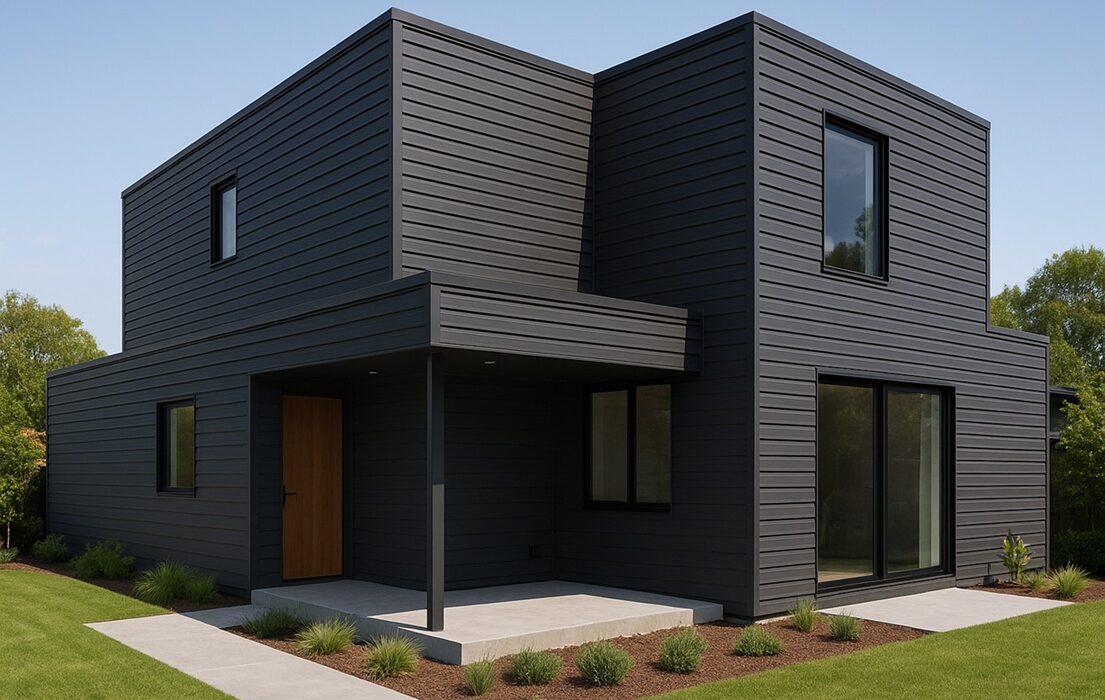Cladding is the external layer of a house covering structural elements. It has gained much popularity in Australia due to its versatility, different variations and design. It offers all the following benefits:
- Protection against all kinds of weather (rain, heat, wind, bushfire)
- A great insulator of damp and noise
- Adds different layers and textures to a home improving aesthetics
- Improves a home’s durability and decreases maintenance
Here are some things to consider when choosing cladding for your home, including a few different options available.
Trends and design ideas
Create a feature
Due to design appeal and even cost, architects often use cladding partially to create a feature wall or contrast between different elements. Examples include mixing timber with metal cladding or stone and timber. Again, due to versatility this does not have to be limited to one section only. Often the entire front of the house gets cladded, or only the upper section.
Composites materials
Composite boards, blends of wood, plastic, fibre, cement, are designed to replicate the look of timber or stone. Yet, these materials often cost less and look similar while still reducing maintenance costs to a house.
Color choices
Many options remain for you to choose from. It’s proven that dark colors absorb heat while lighter colors reflect it. Yet, architects love including dark contrasting cladding while keeping house colors light. Some houses close to the beach often choose lighter cladding colors to garner a beach theme. Additionally different finishes exist such at matte, gloss, natural textures smooth finishes.
Comparing different materials

1. Stone cladding
Stone cladding delivers a timeless look that is one of the most durable options available. It offers excellent fire, water, and temperature resistance, making it a practical as well. On the downside, it is expensive, heavy, and labor intensive to install, often requiring sealing and additional structural support.
2. Vinyl cladding
Vinyl cladding is lightweight, affordable, and easy to install, with the added benefit of requiring little maintenance. It’s a good choice for lower cost builds. However, it might not be the best choice for the Australian climate and can fade, warp, or discolor under the harsh UV rays.
3. Timber weatherboard
Timber cladding is a favorite of many. You just can’t beat the natural look wood offers. However, timber requires regular maintenance such as painting and sealing. It can warp or rot in humid areas, and costs can build up over time.
4. Fibre cement cladding
Fibre cement is durable, non-combustible, and resistant to rot, making it a strong choice for bushfire zones. It requires less upkeep than timber and can replicate traditional or modern styles. However, it can crack if installed incorrectly and may require sealing or painting.
5. Metal cladding
Metal cladding, typically in steel or aluminum, offers strength and a contemporary industrial look. It is durable, fire resistant, and quick to install. Yet, it can dent, become noisy in rain or hail, and conduct heat unless insulated properly. Many modern home and coastal properties install Colorbond cladding as it’s a favorite of Australian designer.
6. Brick cladding / veneer
Brick cladding is highly durable, low-maintenance, and offers excellent fire resistance. It provides a traditional, solid look and helps regulate temperature in cooler climates. On the downside, it can be heavy, more expensive, slower to build with, coming limited in color options.
Do you need help choosing the best cladding for your new home build? Let the IQ Construction help by designing the perfect home for you.
Get in touch with us today!
